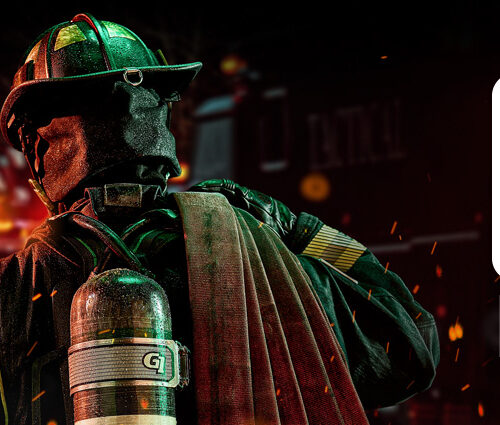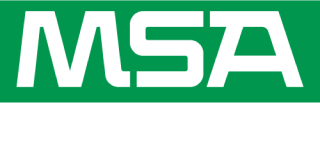
NFPA 1851 deals with fire departments’ selection and care of Personal Protective Equipment, and contains chapters on administration, definitions, program, selection, inspection, cleaning and decontamination, repair, storage, retirement, verification, and test procedures. The 2020 revision continues to require the 10-year mandatory retirement rule for structural elements and 5-year mandatory retirement for reflective outer shells specified in proximity gear.
New Definitions
Many new definitions were added to the 2020 revision, which focuses a great deal on the issue of cleaning. These include but are not limited to sanitizer, gross decontamination, cleaning facility, and verified cleaner. The term “preliminary exposure reduction” was introduced, replacing the term “routine cleaning,” as a more adequate description of the activity that occurs on the fireground. In conjunction with the emphasis on cleaning, a new test was introduced into the 2020 revision, designed to measure the effectiveness of cleaning. This impacts any entity that wishes to offer advanced cleaning as a service, with the one exception being organizations who want to clean their own gear; otherwise, verified organizations, verified ISPs, verified cleaners, and manufacturers verified in cleaning must all have written verification from a third-party certification organization to conduct garment element advanced cleaning.
Chapter 5: Selection and Purchase
Chapter 5, the chapter on selection and purchase, now requires that a risk assessment be performed every two years or under specific circumstances such as changes that affect risk assessment findings, changes in SOP, or when ensemble elements are being considered for selection and purchase.
Additional new requirements found in Chapter 5 are that departments should consider the need for two sets of ensemble elements or spare ensembles as part of their risk assessment, and additionally, that purchasers should consider that ensembles certified for optional liquid and particulate contamination protection [as per NFPA 1971, 2018 revision] are tested and certified as ensembles and must be worn as an ensemble with all elements and interface components present as stated on the element label. The elements used for optional liquid and particulate contamination protection certification include the helmet, hood, SCBA, coat, pant, gloves, and boots. Another change to the risk assessment requirements are that the term “frequency of use” has been replaced with “distinguishing response activities for different potential incidents.”
Chapter 6: Inspection
Chapter 6, Inspection, states that Advanced inspection must be conducted annually or whenever a routine inspection determines potential damage. The Complete liner inspection, including hydrostatic testing of the barrier and visual inspection of inner surface of thermal liner, is now required to be performed annually as opposed to year three in service. With this change in frequency, both the cup test and the flashlight tests have been moved to the annex.
Chapter 7: Cleaning
The most significant changes to the document are in Chapter 7, which is the Cleaning chapter. This section now contains two different decision trees to add in the decision of handling, appropriate cleaning, and disposition of ensemble elements. The first decision tree provides general guidance on cleaning while the second tree is specific to different types of contamination. The frequency of advanced cleaning has been changed from one year to at least every six months, resulting in a minimum of two advanced cleanings in a 12-month period, with one of those advanced cleanings occurring at the time of annual advanced inspection. Advanced cleaning must be conducted using a washer/extractor that is programmable to permit multiple formulations for detergent application, water level and water temperature, and cycle type/function and cycle time. Top loading machines, with or without a center agitator, are no longer permitted.
Chapter 8: Repair
Changes were made to Chapter 8, the Repair chapter, in order to accommodate changes in technology and/or new requirements found in the 2018 revision of NFPA 1971. Repairs to the moisture barrier are now allowed to be performed using different size repair tape, when the moisture barrier manufacturer provides tape in alternate sizes. Visibility markings (i.e. trim) are permitted to be applied over older visibility markings by alternative methods where approved by the garment manufacturer. This is to accommodate the heat applied trim and is generally not allowed for sewn on visibility markings.
Chapters 9 and 10: Storage and Retirement
Chapters 9 and 10 did not change significantly; as mentioned above, the 10-year mandatory retirement remains. However, the text in Chapter 9 was revised to more clearly identify that ensembles not in use should not be exposed to lighting that emits UV rays, including but not limited to fluorescent lighting, direct sunlight, and indirect sunlight.
Chapter 11: Verification
While extensive new requirements were added for cleaning and sanitization of protective coats and pants, in Chapter 11 Verification, the verification for cleaning does not apply to helmets, hoods, gloves, footwear, or ensembles with optional particulate and contaminant protective ensembles. For verification of cleaning garments, the verification agency must investigate the effectiveness of the entity’s cleaning processes against the specific requirements added to the standard. This is done using a new test procedure, Chemical Decontamination Efficacy Test, which utilizes a cleaning verification kit. When tested for removal of selected products of combustion, the cleaning process must provide for a 50% or greater cleaning efficiency for the average of all surrogate heavy metal contamination and of all surrogate semi-volatile organic compounds. When tested for neutralization and sanitization of biological contaminants, the sanitization process must provide for at least log103 reduction of the challenge microorganism.
Chapter 12: Test Procedures
Finally, in Chapter 12, Test Procedures, new tests that have been added to NFPA 1851, 2020 edition are the light evaluation of hood particulate-blocking layers; smoke evaluation of hood particulate-blocking layers; and as mentioned above, a chemical decontamination efficacy test, and a biological decontamination efficacy test.
Visit www.NFPA.org to review the 2020 revision to NFPA 1851. While you must purchase a standard in order to download or print the information, NFPA allows anyone to read any standard for free by opening the FREE ACCESS tab on the NFPA website. The annex for NFPA 1851 has been greatly expanded and contains valuable insight to the new requirements and the reasoning behind them.








